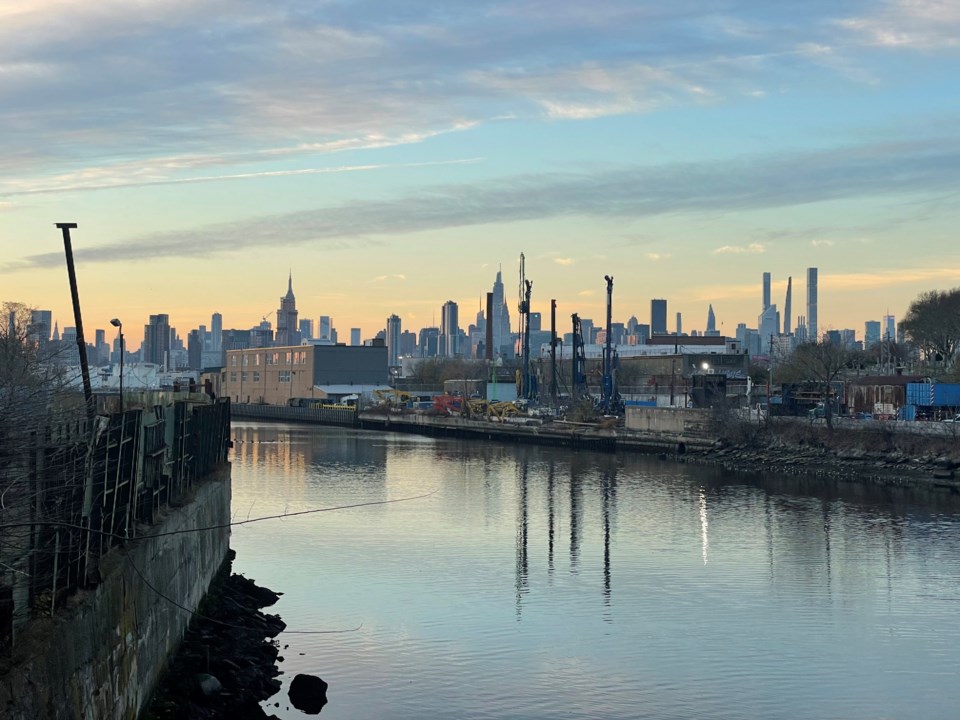Environmental advocates probed into the Environmental Protection Agency’s preliminary plans to clean up the eastern portion of Newtown Creek on Wednesday, questioning officials about the depth of dredging and other matters.
Newtown Creek is a 3.8-mile tidal water body with five tributaries that forms a portion of the North-South Brooklyn-Queens border. It is an EPA Superfund site as many industries lining the creek had dumped chemicals, oil and other toxic substances into the water since the 1850s.
The EPA explained six plans, ranging in cost from $150 million to $500 million, to dredge, cap and remove contaminated sediment from the bottom of the creek.
Four of the plans outlined require various levels of dredging, the process of removing “contaminated sediment from a water body without draining or diverting the water” and capping, essentially containing the sediment in a coffin of rocks. The other plans would either do nothing or dredge all the sediment without capping.
Mike Dulong, a member of the Newtown Creek Superfund Site Community Advisory Group and the nonprofit Newtown Creek Alliance (NCA), was puzzled with one EPA suggestion that it needed only to dredge down six inches to detect what is known as a “biologically active zone,” contrary to the 2018 assessment from the New York State Department of Environmental Conservation that indicated two feet.
Abigail DeBofsky, an ecological risk assessor for the EPA, said that the DEP had “concurred with the preferred remedy” of six inches.
Stephanie Vaughn, an EPA mega projects supervisor, added later in the meeting that dredging down to three-feet was “attractive” to the EPA. Known as Alternative D, this plan would cost $492.7 million.
Willis Elkins, the executive director of NCA, said they were not fully sold on dredging, noting the group had read about the EPA’s Onondaga Superfund cleanup project in Syracuse, N.Y., which, according to the community group A Better Future for Onondaga Lake, still suffers from contamination years after it was dredged and capped.
“One of the silver linings perhaps of this process being so slow in Newtown Creek and we are six years behind original schedule, is that we have the opportunity to learn more from other sites,” said Elkins.
Greenpoint resident Christine Holowacz questioned how often the EPA was going to sample the water to test for toxicity after it dredges and removes the sediment from the creek.
“It is something that we need to refine during the design,” Vaughn said. “It needs to be a high frequency of sampling.”
Other members wondered what would be done with the contaminated material once it was dredged.
Rupika Ketu, a remedial project manager for the EPA, said the water and sediment would be treated at an EPA-approved onsite disposal facility that’s close by.
“We have not selected any sort of facility yet,” Ketu added.
Despite all the questions and objections, meeting attendees were excited that the plan was moving forward.
“After 14-almost-years, this is kind of like the starting gun of the cleanup,” said Leah Archibald, the executive director of the nonprofit Evergreen Exchange and a member of the Newtown CAG’s steering committee. “It’s an exciting inflection point.”
The proposed plans are currently in a 60-day public comment period, where anyone can email Caroline Kwan ([email protected]) and provide their feedback on the plans until Oct. 28.
After that, one plan will be selected, its implementation procedures will be drafted and then clean up can begin, according to EPA community liaison Natalie Loney.



.png;w=120;h=80;mode=crop)
